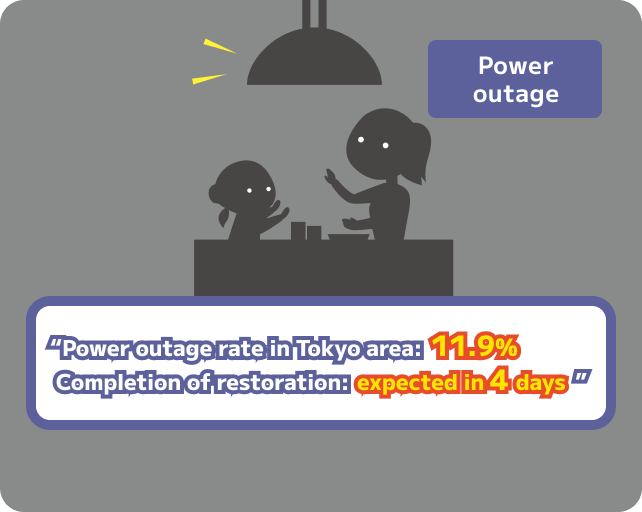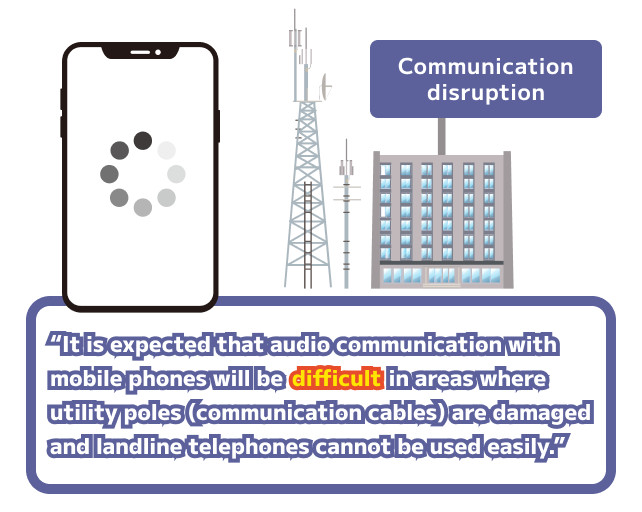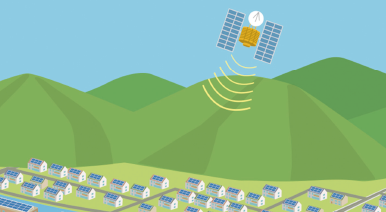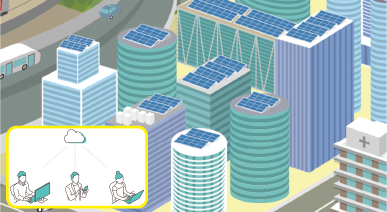Power, Communications, and Data Disruptions
01. Situation in Tokyo
Disruptions of power and communication had significant impacts on urban activities.
-
The March 2022 earthquake off the coast of Fukushima caused around 2.1 million households in TEPCO’s service area to lose power. It took about 3 hours to restore power, and even in the city, elevators and traffic lights stopped working.
-
A communications provider’s equipment failure that occurred in July 2022 not only disrupted voice and data communications, but had significant impacts on urban activities, including ATMs and freight transport.
Hypothetical power outages in the event of a major earthquake

*TMG Disaster Management Council. “Estimate of Damage in the Event of an Earthquake Striking Tokyo Directly” (May 2022). Case of an earthquake hitting directly below the southern part of Tokyo (Source).
Hypothetical communication disruptions in the event of a major earthquake

02. Vision for a more resilient Tokyo in the 2040s
Eliminate concerns about power, communications, and data when a disaster strikes.
-
There is no need to worry that the city will go dark when a disaster strikes.
-
Uninterrupted access to services, even during a disaster, connecting anyone, anywhere, at any time.
03. Addressing each crisis
Power
Promote the adoption of self-sufficient and decentralized power sources, and develop communities where residents can safely evacuate.

-
Promote the adoption of renewable energy facilities, including solar power systems and storage batteries
-
Support home evacuation using electricity supplied by ZEV, such as electric cars
Communications
Realize a “Connected Tokyo” where anyone can be connected anytime, anywhere.

-
Utilize satellite communications in areas with few mobile base stations, such as the Tama mountains and the island areas
-
Reinforce undersea cables in Tokyo islands
Data
Build digital infrastructure for business continuity even in the event of a disaster.

-
Move the work system and servers to a cloud-based system to ensure preservation
-
Run disaster management simulations using data

